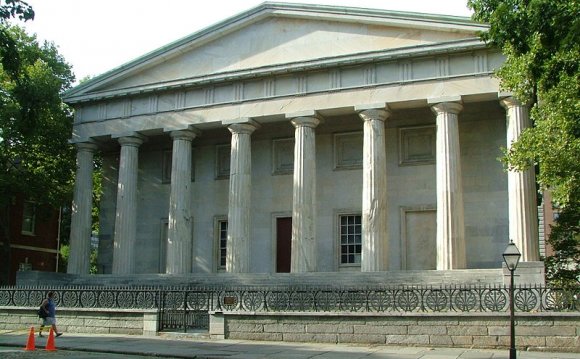
Greek Revival is an excellent example of a style that gained popularity by exploring parallels between an earlier culture and the present day. With British influence waning considerably after the War of 1812 and the nation rapidly expanding westward, the style was fundamentally an expression of America’s triumphant sense of destiny and the sense that our newly formed nation was the spiritual descendant of Greece, birthplace of democracy. Americans’ sympathy and support for Greece’s war of independence from Turkey also contributed to this idiom’s influence. Popular from 1825to 1860, in more isolated parts of the country, the style was prevalent right up to the Civil War.
In time, Greek Revival even became known as the national style, so pervasive were the temple-fronted façades on the nation’s churches, banks, town halls, and houses. Appropriate to the nation’s emerging sense of self, one of the country’s first Greek Revival buildings was the Second Bank of the United States, built in Philadelphia between 1819 and 1824. Fostered by building handbooks used by carpenters and builders, the style moved West with the early settlers and acquired subtle regional differences along the way. Not surprisingly, the fastest growing regions ended up with the largest number of Greek Revival homes. Popular fascination with Greek Revival began to wane toward the late 1800s as architects in the East explored other styles, such as Gothic and Italianate.
Characteristics
Homes in the Greek Revival style were usually painted white to resemble the white marble of impressive and costly public buildings. The details were bold, but with simple moldings. Heavy cornices, gables with pediments, and unadorned friezes were typical. The gable-fronted house, found throughout America, is one of the style’s enduring legacies.
Materials
Stucco and wood, and occasionally stone, are the essential building materials of the Greek Revival style. Intended to resemble stone or marble temples the buildings were usually painted white or enhanced with a faux finish such as the Lee Mansion at Arlington National Cemetery.
Roof
Low pitched gable and hip roofs were typical. The cornice line was embellished with a wide band of trim to emphasis the temple-like roof. Standing seam tin or cedar shingles were materials used at the time.
Windows
The size of window panes in historically accurate Greek Revival residences typically reflected mid-nineteenth century glazing technologies. Windows were thus mostly double hung with six panes to each sash. Decorative windows were frequently in three-part assemblages. Among the style’s unique features are the small rectangular windows set into the frieze beneath the cornice that replaced thecommon dormer. Window surrounds tended to be less elaborate than doorways.
Columns
Columns and pilasters are among the most common elements of Greek Revival. Although classical columns are round, by definition, the Greek Revival style also used square or even octagonal columns. The columns were designed without bases as in the Greek style or with bases as in a Roman adaptation. Columns could be fluted or smooth, but they were almost always built of wood.
RELATED VIDEO
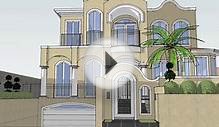
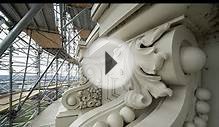


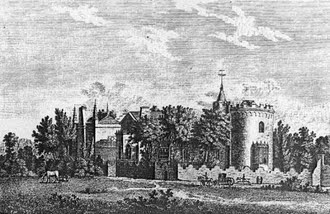 Gothic fiction, sometimes referred to as Gothic horror, is a genre or mode of literature that combines elements of both horror and romance. Gothicism's origin is attributed to English author Horace Walpole, with his 1764 novel The Castle of Otranto, subtitled "A...
Gothic fiction, sometimes referred to as Gothic horror, is a genre or mode of literature that combines elements of both horror and romance. Gothicism's origin is attributed to English author Horace Walpole, with his 1764 novel The Castle of Otranto, subtitled "A...
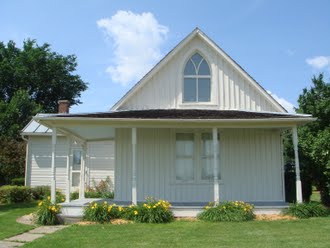 Carpenter Gothic, also sometimes called Carpenter's Gothic, and Rural Gothic, is a North American architectural style-designation for an application of Gothic Revival architectural detailing and picturesque massing applied to wooden structures built by...
Carpenter Gothic, also sometimes called Carpenter's Gothic, and Rural Gothic, is a North American architectural style-designation for an application of Gothic Revival architectural detailing and picturesque massing applied to wooden structures built by...








